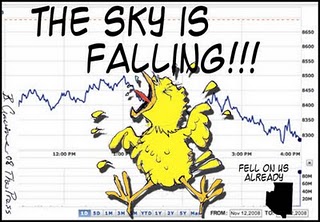 President Obama and Congressional “leaders” have reached an agreement on a deal to raise the debt ceiling. I put leaders in quotation marks because the deal still has to pass the smell test with the members of both houses. There are items in the deal and more accurately some things that are not part of the deal that are sure to raise the ire of Tea Party Republicans and Progressive Democrats. Most believe that the leaders of both parties, with the support of the President, can garner enough support to get the deal passed. For several weeks we have all been inundated with reports about the impending doom of the American economy, and it all centered around the now infamous debt ceiling. The August 2nd deadline hung over our collective heads like the Sword of Damocles. Furthermore, the eyes of the world have been watching with keen interest, and not just the Chinese who are the largest holders of US debt. The American economy is vital to the health of the world economy. In the days and months to come this impasse will become fodder for endless debate about the efficacy of our system of divided government .
President Obama and Congressional “leaders” have reached an agreement on a deal to raise the debt ceiling. I put leaders in quotation marks because the deal still has to pass the smell test with the members of both houses. There are items in the deal and more accurately some things that are not part of the deal that are sure to raise the ire of Tea Party Republicans and Progressive Democrats. Most believe that the leaders of both parties, with the support of the President, can garner enough support to get the deal passed. For several weeks we have all been inundated with reports about the impending doom of the American economy, and it all centered around the now infamous debt ceiling. The August 2nd deadline hung over our collective heads like the Sword of Damocles. Furthermore, the eyes of the world have been watching with keen interest, and not just the Chinese who are the largest holders of US debt. The American economy is vital to the health of the world economy. In the days and months to come this impasse will become fodder for endless debate about the efficacy of our system of divided government .
The United States Constitution gives Congress the sole authority to borrow money on the credit of the United States. In 1917 the United States had finally entered World War I and Congress passed the Second Liberty Bond Act. In short, the act was intended to make it easier to finance that war effort. Congress essentially modified the manner in which it authorized debt. Prior to 1917 debt matters were handled by Congress individually. The Second Liberty Bond Act changed this procedure by setting a limit or “ceiling” on the total amount of bonds that could be issued, and eliminated the necessity of coming to Congress anytime the Treasury wanted to issue bonds. The debt ceiling as we understand it today was further established in 1939 and 1941 with the Public Debts Act.
“The United States Public Debt Act of 1939 eliminated separate limits on different types of debt. The Public Debt Act of 1941 raised the limit, and consolidated nearly all federal borrowing under the US Treasury.”
There have been many subsequent Acts and laws that have had an impact on US government debt but the aforementioned acts essentially laid the foundation for what we understand today as the debt ceiling. Now, everyone agrees that the US debt situation is completely out of control. The schism develops when we begin to discuss solutions. Democrats want to protect entitlement programs like Social Security and Medicare. They want to increase taxes on the wealthiest members of our society and eliminate tax breaks for corporations and the like, essentially rolling back the Bush era tax cuts. Republicans, especially those affiliated with the Tea Party, want a balanced budget amendment, far deeper budget cuts than the Democrats and no tax increases or new taxes. This is a simplification of the issues on both sides, but these are the basic battle lines for what has become an epic struggle. It is nothing less than a battle over what the nature and size of American government will be in the 21st century. I don’t know what the answers are but I have my opinions and in the coming days and months we are going to examine these issues and others from stem to stern. Right now there is a deal, but regardless of what happens between now and midnight on August 2nd there is still a glacial divide between Democrats and Republicans. There is still tons of work that needs to be done and if the lunatic fringe in both parties are allowed free reign we may see this scenario play itself out over and over again. I never believed in slippery slope arguments, but America we are sliding down a hill and its not into a valley overflowing with milk and honey.
Written by Kevin A. McLeroy, contributing writer for STACKS Magazine



